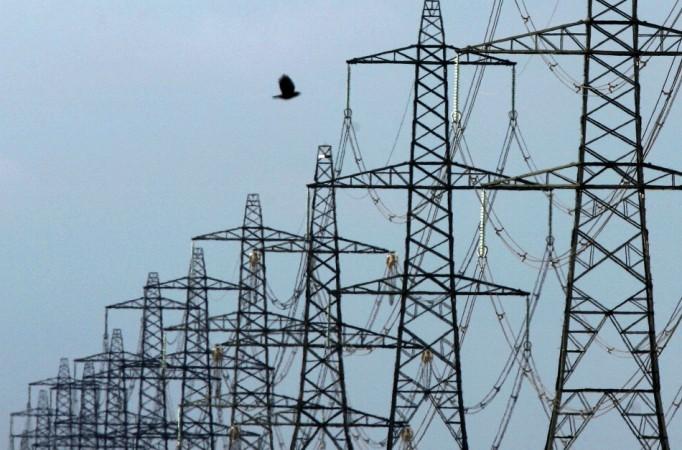Even at a time when the nation was battling a power crisis last year, J&K powered through without any major inconvenience in the Valley. This was surprising considering electricity crisis in the Himalayan region was a norm till August 5, 2019, when the Centre announced its decision to abrogate the so-called special status of J&K and divided it into two Union Territories. It's history now.
The central government has taken proactive steps and provided liberal funding that has put J&K on the path of becoming self-reliant vis-a-vis power generation. To that extent, the Union Power Ministry even sanctioned a generous phase-I package of Rs 5641.91 crore for a complete revamping of the power distribution infrastructure under Revamped Distribution Sector Scheme (RDSS) in both urban and rural areas of J&K. The Jammu Power Development Corporation Limited was granted Rs 2807.70 crore from the sanctioned amount and Kashmir Power Development Corporation Limited given Rs 2834.21 crore to undertake the works hadn't been touched in the last seven decades.

Power sector reforms: The action plan
The government divided the tasks for effective completion. Under Phase-I, projects related to smart pre-paid metering and loss reduction/infrastructure creation will be implemented whereas the modernisation works will be funded separately under Phase II.
The J&K Government submitted an investment plan of Rs 12,922 crore under RDSS to remove all supply constraints in the distribution sector, which would guarantee 24x7 quality electricity to every household, and the Centre is ensuring that the administration in the Union Territory succeeds in its endeavour.
The implementation of Revamped Distribution Sector Scheme (RDSS) in J&K aims at making the power sector vibrant in the Union Territory. The scheme envisages improving the operational efficiency of the Power Department, bringing in greater financial viability, implementing the smart pre-paid metering system, reducing the AT&C losses and strengthening infrastructure for providing reliable, affordable and quality power supply to consumers.
The Power Department will install 14,07,045 pre-paid smart meters, re-augment distribution of transformers, bifurcate lengthy feeders, segregate agricultural feeders, replace old/frayed conductors; install capacitor bank at 66/11kV and 33/11kV substations for voltage regulation and to lay underground cables to prevent pilferage and power disruptions. All these steps will strengthen the electricity system- production, transmission, distribution and connection, in the Valley.
Overhaul of the power sector in J&K
In the past three years, the government has made a commitment to develop a new power infrastructure and improve the existing one to meet the power demands of the people in the Union Territory. Working against all odds, the Power Department achieved last mile connectivity and 100 per cent saturation of the Central Sector Scheme of Universal Household Electrification - a remarkable feat. More than 6,500 new distribution transformers have been installed and reliability of power distribution has been ensured in both rural and urban areas.
![J&K's power sector reformed; 24x7 electricity in valley post abrogation of Article 370 [details] J&K's power sector reformed; 24x7 electricity in valley post abrogation of Article 370 [details]](https://data1.ibtimes.co.in/en/full/774386/jks-power-sector-reformed-24x7-electricity-valley-post-abrogation-article-370-details.png?h=450&l=50&t=40)
The transmission and distribution capacity has been increased. The additional capacity of 1275 MVA has been added to Kashmir by constructing six new grid sub-stations of 220 and 132 KVA. There are now 54 new receiving stations and 48 receiving stations have been upgraded. The resources for providing electricity to a large population have been strengthened by spending a total of Rs 1,451 crore.
The grievances and complaints of the consumers are being redressed in the shortest possible time through an effective feedback system, grievance redressal mechanism and 24X7 call center of the Power Department.
In January 2021, the Jammu and Kashmir Government signed Memorandums of Understanding (MoUs) with the National Hydroelectric Power Corporation (NHPC) to make J&K power surplus and to attract the investment of Rs 35,000 crore into the Union Territory. The MoUs were signed for implementation of much-awaited mega hydropower projects, including 850 MW Ratle HEP and 930 MW Kirthai-II HEP besides execution of long pending Sawalkot HEP (1856 MW), Uri-I (Stage-II) (240 MW) and Dulhasti (Stage-II) (258 MW). Besides signing the MOUs, 19 important projects of the J&K Power Department aimed at greater generation, efficient transmission and better distribution of power supply in J&K were also inaugurated. Since then there has been no looking back.

As a result, the Himalayan region is capable of generating 14,867 Mega Watt power, which is a remarkable upgrade from merely 3504 MW of electricity. In the coming years, the power generation is all set to double.
Abrogation of the so-called J&K's special status changed the entire scenario. Looking at the future, Union Minister of State (MoS) Dr. Jitendra Singh recently said that the Union government is working towards making electricity free in Jammu and Kashmir in the next 4-5 years by installing solar plants.
"After 4-5 years, electricity will be free. So on one side, where there's so much chaos regarding the inflation, Jammu will become a role model depicting the alternatives we have," Singh said.

















